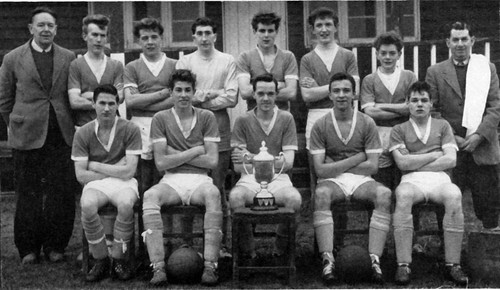
Professional sports photographers usually have top equipment, including digital SLR cameras with enormous lenses that allow them to see the action as if up close. And they often get the best spots for viewing, with camera angles that help ensure great shots. Knowing that professionals get all those breaks that help them take awesome sports pictures may make you throw up your hands in resignation, thinking that you'll never be able to get those great shots. But that isn't necessarily true.
OK, as for capturing the winning World Cup goal: you really won't get that shot, but if you bring your expectations closer to home, you can get some fantastic sports shots, most likely using the camera you already have.
The first key to getting good shots is to know the sport. Once you know the general pace, and get some idea of how key players work, you'll not only know where to focus the camera, but also how quick you have to be. Shooting a golf tournament is going to be much more relaxed than shooting a basketball game.
The second key is to know the lighting. If you're lucky enough to photograph a summer baseball game under clear skies, you can close the aperture down and use a high shutter speed and get some amazing action shots: a fielder jumping for a fly ball, a batter connecting with a perfectly placed fastball, or a pitcher in the middle of a wind-up.
On the other hand, if you're taking pictures of a basketball game, the lighting will not only be dimmer, but will tend to distort colors. It is also unflattering to most skin tones. Often, when shooting an indoor game, you will need to open up the aperture, meaning that you'll sacrifice depth of field. But that is OK, because shallower depth of field makes a subject stand out from the background.
And since indoor sports (hockey, basketball, swim meets, and skateboard tournaments, for example) are almost always fast paced, you'll need a lens that is roughly focused on the action at all times. And you'll need to shoot lots and lots of pictures. Don't worry if the focal length isn't perfect. Just get the shots. Make sure your camera batteries are fresh, and perhaps bring in extra batteries and exchange them during breaks in the action.
Though it seems like the perfect environment in which to use a flash, it probably isn't a good idea, because flashes can distract the players. Instead, set your camera to a 1600 or 3200 ISO and set the aperture to 2.8 or 3.2. You might sacrifice a little sharpness, but you'll capture action without blinding the players.
Perhaps the most important advice for aspiring sports photographers is to practice. Even good photographers take many, many blurry or badly composed shots before getting one good one. It is, however, a good idea to at least look over all your photos on your computer screen before erasing any of them. It is difficult to tell on a tiny viewfinder screen if you have inadvertently captured something not readily apparent, like a bead of sweat falling off someone's brow. Basic digital photography software will allow you to crop and zoom and perhaps surprise yourself with an unexpected gem of a shot.


0 comments:
Post a Comment